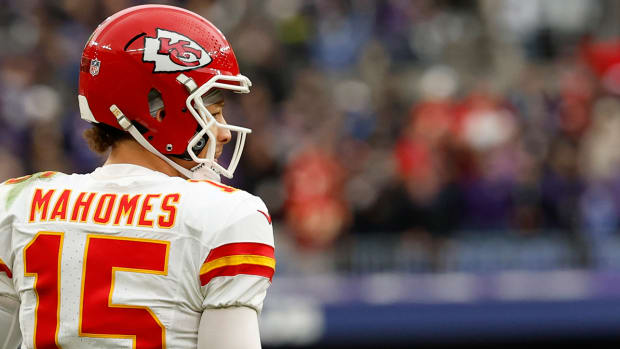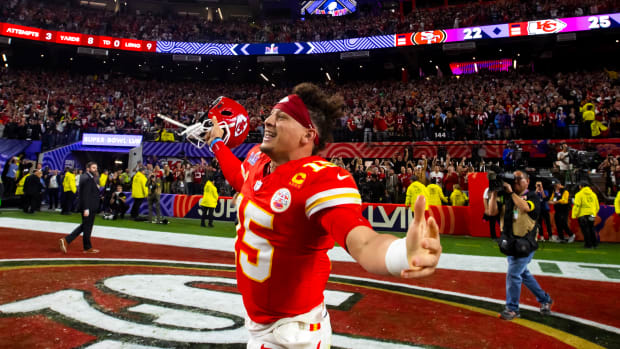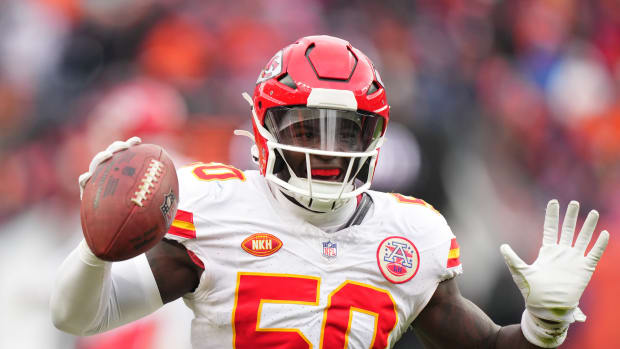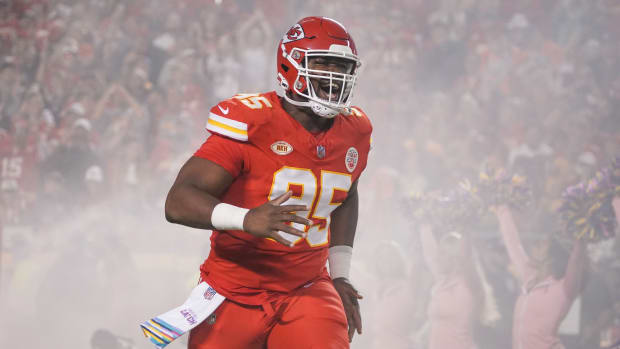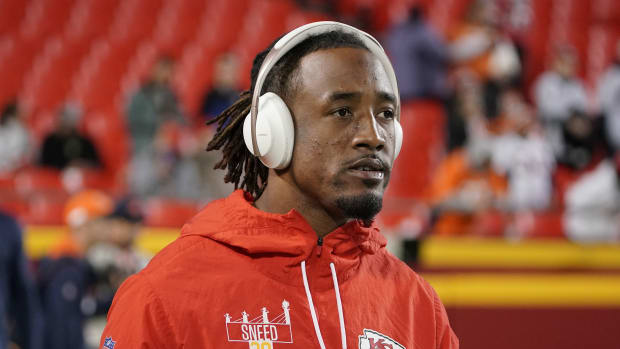Film Review: Will Noah Gray or Jody Fortson Break Out in 2022?
Over the years, the Kansas City Chiefs have relied on Travis Kelce to run the show at tight end. Subsequently, he has out-snapped every other tight end on the roster by far. With that said, Kelce saw his snap percentage drop from around 90% in prior years to 82% in 2021. Additionally, he saw his lowest totals for targets and receptions since Patrick Mahomes became the full-time starter in 2018.
As Kelce has aged, the Chiefs have made a concerted effort to reduce his workload, meaning the tight ends behind him have to be ready to play and produce. The two players that can do this are Jody Fortson and Noah Gray.
Fortson and Gray got their first taste of the NFL last season. The former has been a part of the Chiefs organization for a while but has mostly lived on the practice squad. Last year was the first time he made the active 53-man roster and played in a real NFL game. After getting off to a good start, he tore his Achilles in Week 6 against the Washington Football Team. The latter was able to play his entire rookie season but saw limited snaps on the offensive side of the ball. He contributed more as the season went on, even catching two passes in the Chiefs' Divisional Round playoff thriller against the Buffalo Bills.
The combination of Fortson and Gray racked up 19 targets for 14 receptions, 97 yards and three touchdowns in the 2021 season (including playoffs). With a full year of experience under their belts, however, they should now have more of a role and a better chance to contribute more significantly.
Fortson gives the Chiefs a big-bodied target, something that Andy Reid hasn't had in his offense in prior years. As a result, the Chiefs rarely run fade routes and jump balls for their weapons. Their recent shift in size at the wide receiver position may signal possible a change in this philosophy, though, and Fortson can be a part of that. In the few games he did play, the Chiefs used Fortson's size to their advantage.
Mahomes trusted Fortson in this situation as he quickly fired a pass to allow Fortson to go up and get it. Fortson came down with the grab and was never challenged by the defender because of his size. Later in the year, the Chiefs used Gray on a similar play. It was fourth-and-goal in a high-leverage part of the game; Gray was asked to run a quick route and give Mahomes a target in the endzone.
The trust that Mahomes had to have in Gray here is exceptionally high. Not only is it fourth down in one of the most crucial moments of the contest, but Mahomes also throws before Gray even breaks his route. He simply trusted that Gray would be in the right spot to grab his first career touchdown.
Fortson and Gray complement each other well. They work in different areas of the field, giving the Chiefs' offense more versatility. Gray is better when working underneath and in the intermediate regions, while Fortson is more comfortable running down the field due to his history of playing wide receiver. Against Washington, Fortson ran a wheel down the sideline and made a catch for a huge gain.
Mahomes lobbed the pass to the area where Fortson was running to. Even though the ball was a bit underthrown, Fortson — with his size and athleticism — leaped up, high-pointed the ball and came down with it.
Coming out of Duke, one of Gray's most intriguing qualities was his ability after the catch. He was getting comparisons to Kelce in training camp last year, with some going as far as referring to him as "Baby Kelce." Though Gray was not given many opportunities to showcase that ability, he flashed it throughout the season. If given more opportunities, Gray should be able to utilize his field awareness and "wiggle" at a higher rate.
One way that both Fortson and Gray can get on the field more is by becoming better blockers. Throughout their respective seasons, both improved. Gray was often used as an inline blocker, and his role as an H-back or insert blocker could be increased this year with a possible shift to more power run plays. Where Fortson was able to flash his blocking ability was in space. Against the Philadephia Eagles, both Fortson and Gray were used in that fashion as blockers to pave the lane for Mecole Hardman's significant gain.
Fortson (circled in yellow) initially goes behind the offensive line to create misdirection. He then shoots outside to block the cornerback, thus making the hole for Hardman to run through. Gray (circled in red) over-pursues his defender but recovers to seal the edge, which creates a massive opening on the field.
Having more weapons, specifically at the tight end spot, allows Reid to design different plays in two- or three-tight end sets. This could catch opposing defenses off balance. Last preseason, the Chiefs even broke out a four-tight end set (14 personnel).
If Fortson and Gray continue to improve and the coaching staff and players have more trust in them, the Chiefs will feel more comfortable with them on the field. They can give teams different looks near the goal line, in short-yardage situations and even on first down as needed. Kansas City's offense can become even more dangerous if it can run and pass out of multiple sets.
Again, both Fortson and Gray saw limited action last season and Fortson's health is still a relative question mark. It's hard to make definitive conclusions about a player or a player's trajectory with such a small sample size. They did show flashes and promise, though, which should give Chiefs fans hope. If they can stay healthy throughout the season, they should have more prominent roles in Reid's offense and lead to more individual and team success.


